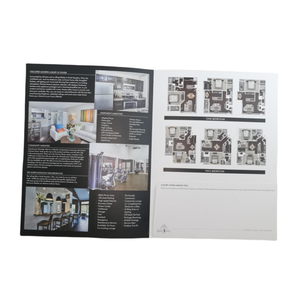(1805 products available)































































































































































































































File folder cabinets come in different types to fulfill various storage and organization requirements. The most common types include vertical, horizontal, lateral, mobile, and specialized cabinets. Each of these types offers unique benefits depending on the user's specific needs.
are among the most widely used filing solutions because their structure relies on growing documents in a stack. They are, therefore, ideal to use in narrow sections of offices, where space is at a premium. The drawers of a vertical file cabinet pull-out in a way that makes it easy to store documents in hanging folders filed alphabetically or categorically.
These cabinets are designed to have more surface storage area, thus making more oceanatory work areas available. Such cabinets are considerable when storage space is more important than floor space since their drawers are shallow and wide, ideal for keeping documents sorted and are easily accessible. Horizontal cabinets are particularly practical for offices where frequent referencing and quick access to documents is needed.
are constructed to provide file drawer sideways access and try to combine filing systems with the need for office furniture space. Lateral file cabinets are perfect for expansive offices since they offer wider drawer systems that can store bigger file folders. They are ideal for holding legal-sized documents or large collections of business records due to their length and adaptability.
bring flexibility and practicality in filing. These cabinets normally sit on wheels, creating the option of moving them as required. Such cabinets are great for working areas that may undergo different arrangements or require further storage solutions for additional work desks or in meeting rooms. A mobile file cabinet consists of small vertical filing drawers, and one can easily pull it on castor wheels while it sits under the desk or is partitioned for temporary use.
For more specific storage and organization solutions, some file cabinets are designed with unique features for archival storage, safety storage, or storage for specific records such as medical or legal records. Archival file cabinets are constructed from materials that are more friendly to archives, creating storage facilities for documents that must be protected from deterioration. Drawer lock systems entry and safer storage cabinets for firearms or security documents. Medical and legal file cabinets also come with compartments for easy storage and classification of records in accordance with rules and regulations.
When choosing a file folder cabinet, it is crucial to consider its specifications and features as they greatly impact its functionality and durability. Several key elements, including material, storage capacity, locking mechanisms, and design, play a vital role in selecting the right cabinet for specific needs.
File cabinets can be made from various materials, each offering distinct advantages. Steel file cabinets are the strongest and probably the longest, thus providing security and preserving documents. Steel cabinets are also fireproof; therefore, they secure the documents from elements that may destroy them. Wood file cabinets offer more decorational value, thus adorning office interior themes and making it more hospitable. Some people's preference for the wooden structure comes from the need to have proof of records or files that have been documented over time. Lastly, it is worth noting that metal and wooden file folders have their advantages, but there is also high availability for cabinet structures made of steel and wood veneer, which can be quite impressive. They combine the durability of steel and the refined outlook of wood.
File cabinets have different drawer quantities ranging from three to over ten, and there are several specifications regarding the depth of each drawer. Documents can be arranged in a way that more files per drawer are required for cabinets made with several deep drawers and massive storage requirements. When working with small offices or spaces that are dynamic, it could be a draw or shallow pull type, which is manageable and has fewer files.
For safety and protection from unauthorized personnel, the locking system plays a major role. Most metal file cabinets have a central lock system that locks all the drawers at a time. Some modern cabinets also come with an electronic locking system. The key and lock system or combination lock systems are more common, requiring no power sources. In offices where confidential documents are stored, safety is paramount when selecting a cabinet with a good locking system.
Ball bearing suspenders are not just any drawer slides; they are command and easy-to-pull suspenders for this task. They guarantee smooth operations, including the opening and closing of the cabinet doors, and add to the life of the cabinet.
File cabinets come with many finishes for the interior and exterior that one can place in an office, from black, white, and metallic shades, to wooden texture veneer. The quality and the design of the handles play a role in the handle's functionality and the overall appearance of the cabinet in that particular space. It is the handle style that pulls the drawers, and it can also blend or complement the style of the furniture within the office space.
File cabinets are used in various situations and circumstances to organize and preserve documents of different types. Businesses use file folder cabinets to hold vast and different documents, contracts, reports, and correspondence. These cabinets keep business documents orderly and accessible and support compliance with legal requirements for document retention. They also secure confidential documents using locking drawers, ensuring that sensitive information is out of reach of unauthorized personnel.
In schools and educational institutions, file cabinets are used for organizing student records, academic files, and administrative documents. Teachers also use file cabinets to organize lesson plans, syllabi, and curriculum materials systematically. This organization enables easy retrieval of essential documents when needed, whether for audits, legal inquiries, or academic evaluations.
Legal offices deal with numerous case files, legal documents, and important records. File cabinets designed specifically for legal records, often equipped with compartments for different types of documents, help attorneys keep their files organized in a system that allows for quick access. Medical records, patient information, and healthcare documentation require a specific approach to filing and preserving. Medical offices and hospitals use archival-quality file cabinets to protect patient records from deterioration while adhering to legal and privacy regulations regarding medical record storage. Archival file cabinets provide storage for valuable items in conditions that may be harmful to such items, including items made from paper. These cabinets are made using such materials as they are intended to preserve these records for future use. These file cabinets use file folders that protect such documents from damage.
Choosing the right file folder cabinet involves considering several essential factors to meet specific organizational needs effectively. By evaluating space requirements, the volume of files, material preferences, security concerns, and budget constraints, one can make an informed decision that enhances office or workspace functionality.
The first step in choosing the right file cabinet is to consider the available space. The size and layout of the workspace will determine what kind of file cabinet is appropriate. Vertical file cabinets are perfect for narrow spaces, while horizontal or lateral cabinets require more floor space but provide wider storage solutions. Mobile file cabinets are ideal for temporary filing needs or for spaces that may require frequent rearrangement. Measuring the designated area and accounting for the cabinet's height, width, and depth will ensure a perfect fit without overcrowding the room.
The volume of files that need to be stored will also impact the choice of a file cabinet. Filing systems, which require much storage and organization, would need a cabinet with more drawers or deep ones, such as making a business or legal office using lateral or vertical filing cabinets. For smaller filing systems, a shallow, horizontal filing cabinet or a mobile file cabinet would be suitable. Assessing the current filing needs and forecasting future growth will help select a cabinet that accommodates evolving requirements.
The choice of material for the file cabinet will be influenced by durability, aesthetics, and budget considerations. Metal filing cabinets provide the strongest and most secure way to store valuable paper materials; in addition, they come in fireproof varieties. Wood file cabinets add class to an office and may give moderate security for documents. There are also mixted material cabinets that try offering the best from both.
Security is another important factor when selecting a filing cabinet, especially in environments where confidential or sensitive information is stored.-file cabinets with internal locking systems for each drawer ensure that personal, legal, or medical records are protected from unauthorized access. Electronic locks and keyless entry systems are also available for added convenience in high-security areas.
Lastly, the budget will play a significant role in selecting the right filing cabinet. File cabinets come in various price ranges, depending on their materials, size, and features. While investing in a durable, high-quality cabinet may be worthwhile for long-term use, affordable options may suffice for less demanding environments. Comparing prices and evaluating the cost of maintenance, durability, and potential replacement will help in making a cost-effective decision.
A1: Metal cabinets provide more strength and security, while wooden cabinets are more attractive and add warmth to an office space.
A2: The typical depth of a file cabinet drawer is 15, 20, and 24 inches. Legal and letter-sized file folders measure standard drawers, which can be up to 10 or 12 inches wide and 14 or 16 inches deep.
A3: Important documents such as tax records, legal documents, personal papers, medical records, and historical items should be stored in a filing cabinet. Business files, and financial records, archival storage for important documents requires a stable environment.
A4: The standard lifespan of a well-constructed metal file cabinet is 20-30 years, while a wood file cabinet may last 10-20 years, depending on usage and care.